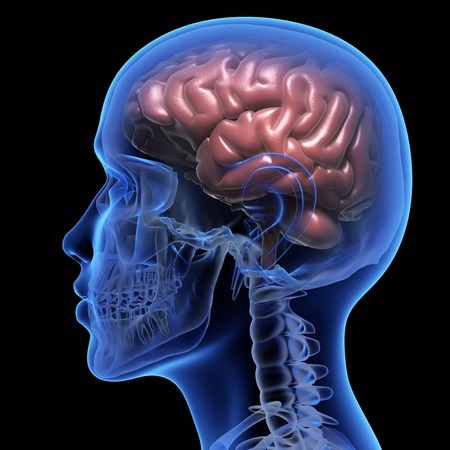Behavior Therapy
What is Behavior Therapy?
Behavior therapy begins with an in-depth assessment of the patient’s condition including behavioral patterns. Patients may be requires to answer questionnaires or keep daily journals so the therapist can recognize trends in behaviors, such as triggers of the behavior. Once the patient’s condition is assessed, the patient and therapist agree on short and long-term goals for the therapy.
Goals of Behavior Therapy
The goals of behavior therapy are specific: to change or eliminate specific behavior. Typically, the therapist and the patient will work together to set clear goals for the course of therapy. However, patients do not always actively participate in their therapy. For example, people forced into behavior therapy (such as institutionalized patients or children by their parents) may be reluctant to participate at all.
The Role of the Therapist in Behavior Therapy
Texas Care therapists take on various roles throughout the course of behavior therapy. First, the therapist must be the “teacher” by helping the patient to recognize destructive behaviors and their patterns or triggers. Depending on the method of behavior therapy used, the therapist may act as a supportive person (such as when coping with stress caused from confronting a phobia) or as a harsh authority figure (such as when pushing a patient to deal with a phobia).Your Texas Care therapist may also work with family members to teach them skills for dealing with the negative behaviors.
Methods of Behavior Therapy
Treatment with behavior therapy often focuses on “what,” “when” and “how” questions, but never “why” questions. Common methods of behavior therapy include:
Behavior therapy works to eliminate or improve thoughts and behaviors that negatively affect the patient.
- Systematic desensitization: This method of behavior therapy is specifically used for overcoming anxiety disorders including specific phobias. First, patients are taught relaxation techniques to use during the course of treatment. Then, they gradually work towards confronting the fear. For example, a person with a fear of water may start by looking at pictures of water, then gradually work up to putting his/her feet in water, and finally submerging in water.
- Exposure and response prevention: This method of behavior therapy is most typically used to treat obsessive compulsive disorder. It involves exposing the patient to his/her specific trigger. For example, a patient who compulsively washes his hands may be required to put dirt on his hands and leave it there for a set period of time. The time frame would increasingly increase until the patient does not feel an immediate need to wash his hands once they become dirty.
- Behavior modification: This method uses positive and negative reinforcement to help the patient (usually a child) learn different behaviors. Behavior modification has shown effective in treating behavioral problems in children with ADHD.
- Flooding: Flooding is similar to systematic desensitization as both require the patient to confront a fear. However, flooding occurs rapidly and overwhelmingly without any gradual approach. The goal of flooding is to show the patient that his/her fears are not rational. Flooding is not as effective as systematic desensitization but it is much faster.
- Operant conditioning: Operant conditioning uses positive and negative reinforcements to reward and punish behaviors.
- Covert conditioning: In this method of behavior therapy, the undesirable behavior is paired with unpleasant stimuli. An association is then formed between the two in order to discourage the patient from the behavior.
- Observational learning: This method is most commonly used in young children. The patient will observe positive behaviors performed by others. Then, the patient will be encouraged to follow these behaviors.
- Contingency management: This method is commonly used for treating drug and alcohol addictions. It involves a reward/punishments for following/disobeying set rules.
- Habit reversal training: Primarily used for treating repetitive behavior disorders, this method follows a multi-step system in which patients are made aware of their problem, learn response, relaxation, and generalization training, and undergo contingency management.
What does Behavior Therapy Treat?
Behavior therapy is most commonly used for treating disorders in which the symptoms themselves are the problem. For example, some patients with a debilitating specific phobia may not present any other psychological symptoms. Symptom-based conditions, including obsessive compulsive disorder, anxiety disorders, and impulse control disorders, have shown very responsive to behavior therapy.
Behavior therapy can also be used for disorders which are not necessarily symptom based. For example, behavior therapy has proven effective for treating depression in some cases. One expert, Peter Lewinsohn, theorized that depression is actually a low rate of behavior which causes all of the other symptoms. While this theory has been criticized and unaccepted by the psychological community, evidence shows that behavior therapy can treat depression. For depression, treatment may be much more complex and involve the patient identifying certain trends in emotions and finding ways to avoid or overcome them through positive reinforcement. However, it is much more common for non-symptoms based psychological disorders to be treated with other approaches or a combination of cognitive and behavioral therapy.
For more information on Behavior Therapy or other Texas Care treatment services, feel free to call 1-88-98TODAY and an Intake Coordinator will be happy to take your call and direct you to the appropriate department. Visit our FAQ page for more information on how Telehealth, Telemedicine, and TeleBehavioral Health can work for you.















